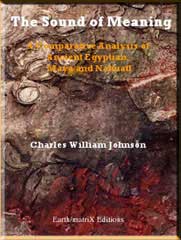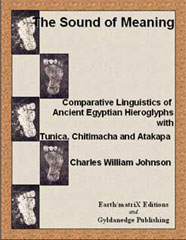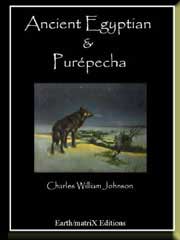|
|
|
Purchase in Amazon
|
|
|

PART: VI
THE AZTEC CALENDAR:
THE POINTER
Aside from this particular example, we might also consider the possibility that the day-glyph ring actually revealed the 18 months (of twenty days) in the following sequence:
 |
There is an obvious correspondence
among some of the day glyphs and names of the month names (3, 5, 17);
while others are not so evident. It does seem to follow the logic of design
that the months would be assigned spaces between days 1 and 20, the beginning
and ending of a year count.
We were unable to find a similar relationship that might be suggestive
of the trecenas (13-day cycles) or the aggregate ones (los acompañados),
the names attached to the last 100 days of the 360-day count. So, we decided
to work out the trecena on the day-glyph ring. A very unique pattern
obtains, as may be seen in the following illustration, where we have marked
off the last day glyph of each trecena on a 221-day count. (We
shall explain shortly why 221 days).
 |
One should notice that the day-glyph numbers 7, 14, 20 are not connected in this pattern, but become connected when we continue to mark off the remaining cycles of the 260-day count. However, the lines that mark off these specific 13-day cycles (numbers 18, 19, 20, 21) now form the following figure:
 |
These lines now complete the 260-day count calendar, and connect all of the day-glyphs (including now numbers 4, 7, and 20).
When we visualize the mid-section of these particular lines, it would appear that they are aiming towards the day glyph which is represented by an Ollin, glyph number 17. Observe the following illustration:
 |
Interestingly, as we pointed out on the correspondence of the months to the day-glyph ring, the Ollin glyph corresponds to the month name Quecholli (see). In other words, it would appear as though, by design, the pointer and the day-glyph ring relationship is indicating the aggregates (los acompañados), which correspond to the remaining 100 days of the 364-day count. The linear pattern of the remaining 13-day cycles, then, on the day-glyph ring would be as follows:

|
Furthermore, one should notice
that the number of day-glyphs touched by these remaining 13-days is precisely
nine, the number of the aggregates; some of which seem to correspond to
the day-glyphs themselves (numbers 6, 18, 19, 20). (Los acompañados
are: Xiuhteuctli Tletl; Tecpatl; Xochitl; Cinteotl; Miquiztli; Atl; Tlazolteotl;
Tepeyolotli; and Quiahuitl).
From the perspective of design, it becomes extremely intriguing to consider
which might be actually conceived first (the day-glyph conception; the
day-glyph ring; the counting system of 13s and 20s; the actual calendar),
in order to present the patterns. Let us further consider, then, a possible
pattern that might suggest a design regarding the behaviour of the planet
Venus and its corresponding cycles. Let us illustrate this example on
the pointer.
| Home | Part: I | Part: II | Part: III | Part: IV | Part: V | Part: VI | Part: VII |
©1995-2011 Copyrighted by Charles William Johnson. All Rights Reserved
Reproduction prohibited without written consent of the author.
| Home | Books | Author | Site Map |




